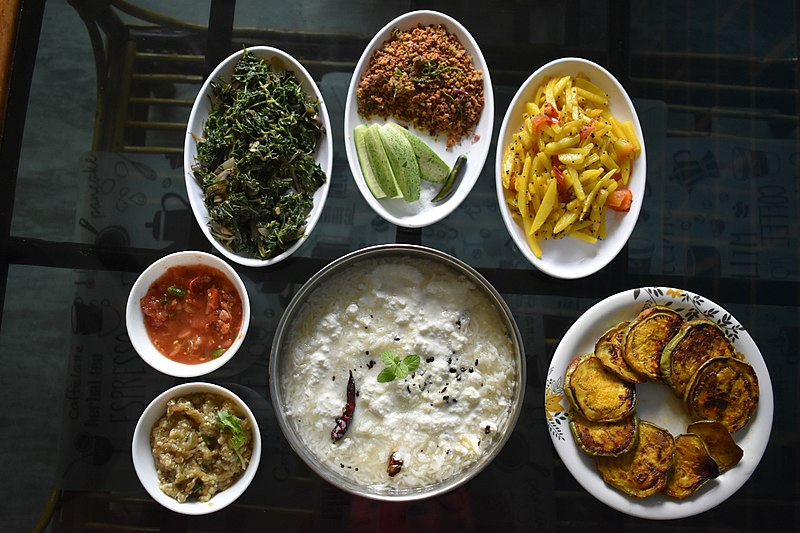Summer is officially here and temperatures are already hovering around 40 degree C leaving everybody feeling fatigued, sweat-soaked and untidy. You must remain hydrated for your wellbeing as your body tends to lose water at a faster pace because of the sweltering heat.
And what can be a better option than Pakhala Bhata, the great Odia recipe that has caught the imagination of food lovers in India and abroad. As we invite summer, let us rejuvenate and recharge our body with this absolute best summer refreshments to beat the heat. ‘Pakhala’ is a natural coolant and in hot humid months, it helps prevent dehydration.
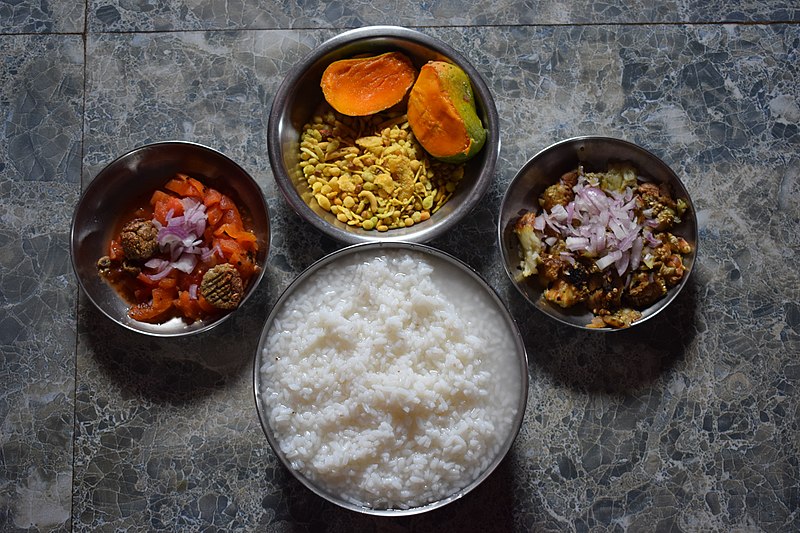
Pakhala Bhata, a lunch staple in almost every Odisha household, offers a wonderful break from the summer heat. This Odisha dish is made by soaking cooked rice in sour curd and water and is served with fried fish, potatoes, Badi choora, and papad on the side. This delicacy should be one of your first dishes to try on your trip to Odisha as it is a popular and the signature dish of the state.
The dish takes different name in different states of India including including poita bhat (Assamese), pakhala bhat (Odia), pazhaya sadam (Tamil), geel bhat (Bihar), chaddannam (Telugu), and pazhamkanji (Malayalam).In Odisha, however, people have had a far more consistent relationship with Pakhala as they call it.
Here, in this post I will talk about different types of Pakhala Bhata and other aspects of this delicacy.
Related Article: 15 summer drinks you must try to beat the heat this summer (2022)
Post Contents
Pakhala Bhata History
It is yet to be ascertained when exactly pakhala was initially included in the daily diet of Eastern Indian people, but it was included in the cuisine of Lord Jagannath Temple of Puri during the 10th century. Pakhala is popular in the Indian subcontinent’s East (including Nepal and some parts of Myanmar). It is not to be noted that the word ‘pakhala’ featured in the book of Odia poems by poet Arjuna Das in his literary work ‘Kapalata’ (1520-1530 AD).
Odisha is an Eastern Indian state and witnesses quite hot weather during summer.. On the other hand, the majority of the Odia were farmers (the previous name of Odisha, “udra,” means “farmer”). They were hard workers who toiled in the field. They preferred “pakhala” to maintain their body temperature perfectly in a hot environment and hard work. Pakhala (water rice) helped them stay hydrated and have enough energy and nutrition to work in the field all day. This is the history of pakhala bhata.
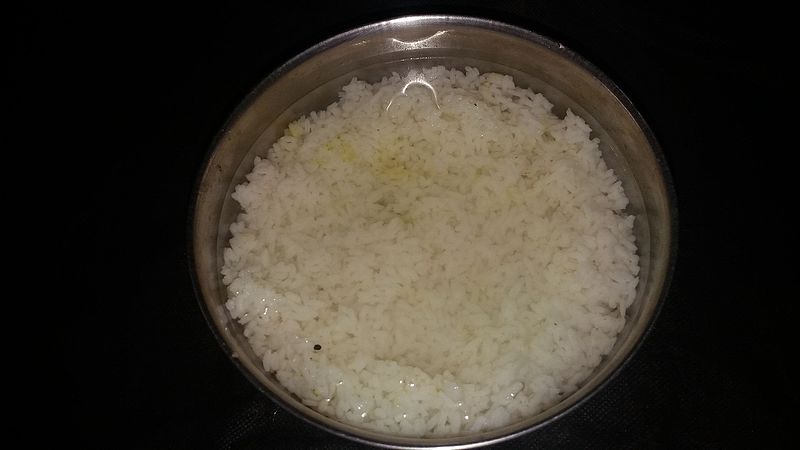
Preparation of Pakhala Bhata
Rice that has been cooked and left to cool is often used to make this dish. Cook and cool regular rice. Fill a bowl halfway with water and rice. Heat a pinch of oil in a pan, then add the mustard seeds, curry leaves, and dry red chile and saute until they are fragrant. Combine this chhunka or tadka with the sour curd in the pakhala bowl. To improve the flavour, garnish with mint leaves and raw salt.
To add zing, try fish fry or sukhua poda (dry fish fried), saga bhaja, badi chura (a regional cuisine item consisting of batter of urad or black gramme dried under sunlight as small nuts and then fried to serve) and many more dishes.Cumin seeds are fried, crushed into a fine powder, and combined with coriander leaves and salt in a curd. It is occasionally served with a fish fry and spinach. This is the most popular way of preparation of Pakhala Bhata. There are more traditional ways to prepare the dish.

Also read: 9 exotic places you must visit this summer holidays in 2022
Traditional preparation of Pakhala Bhata
Pakhala is rice that has been partially fermented. After the rice has been cooked, a small amount of old pakhal is added to the water (something similar to making curd using milk and old curd). Pakhala tastes best 8 to 12 hours after preparation; in this case, no old pakhal is needed to be added to the rice because fermentation occurs after 6 hours of keeping rice in water. The Pakhala is slightly sour on its own, but a paste of green chilli, green mango, and ginger is added to give the Pakhala a slightly hot and sweet flavour.
Pakhaa is typically served with burnt potato or aloo poda (boiled is occasionally used) and other fried veggies or fried fish. Dahi baigana (curded brinjal), Kakharu phula bhaja (fried pumpkin flowers), mashed potatoes (alu bharata), fried fish (machha bhaja), fried prawns (chingudi bhaja), sukhua (dried fish), and saga bhaja (sauteed leafy vegetables) are some of the side dishes.
Types of Pakhala Bhata
The different types of Pakhala are classified according to their preparation. Some types are freshly prepared while few are allowed to ferment. Some popular variants are discussed here.
Saja Pakhala (Fresh Pakhala)
Saja Pakhaa (fresh pakhaa) is made by instantly adding water after making freshly cooked rice with a few drops of lemon in it. Fermentation is not required for this variant. This is one if the most popular pakhala types which can be eaten any time of the year.
Basi Pakhala (Fermented. Pakhala)
Basi Pakhaḷa (stale pakhala, basi in Odia means “stale”) is prepared by fermenting rice by adding water which is generally kept overnight and eaten in the next day. This variant of pakhala follows the traditional method of preparation. People also eat it with badi chura along with diced onions and lemon to add flavors to the dish.
Basi Pakhala is another popular variant of the dish which is enjoyed by all, though it is particularly popular with tribal and rural population. This variant induces some sleep.
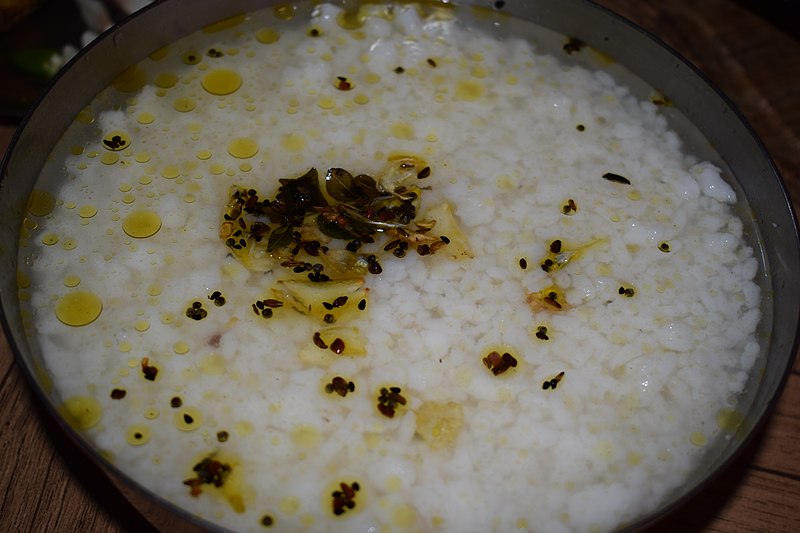
Do read: A Day Trip to Pichavaram Mangrove Forests
Dahi Pakhala (Curd Pakhala)
Dahi Pakhaa is prepared by mixing Saja pakhala (Fresh Pakhala) with curd. It is done to derive a sour taste without fermentantion of the rice, as in case of Basi pakhala. However some people prefer adding yoghurt to Basi Pakhala also. Badi chura, fish fry, mashed potatoes are served as side dishes with this variant of pakhala.
Sugandhi Pakhala (Flavoured Pakhala)
Sugandhi Pakhala or Subasa Pakhala (flavoured pakhala) is made by adding chopped or grated ginger and roasted cumin seeds to cooked rice that has been submerged in salty water. This variant which gives the pakhala an aroma is a treat for your taste buds.
Mitha Pakhala (Sweet Pakhala)
Mitha Pakhala (sweet pakhala) is prepared by adding sugar or jaggery to cooked rice and water along with roasted cumin. It is quite an unusual and uncommon variant and not popular compared to popular fresh or fermented pakhala. Sometimes oranges are added as well. This variant is usually offered to gods in temples including at Puri Jagannath temple during summer.
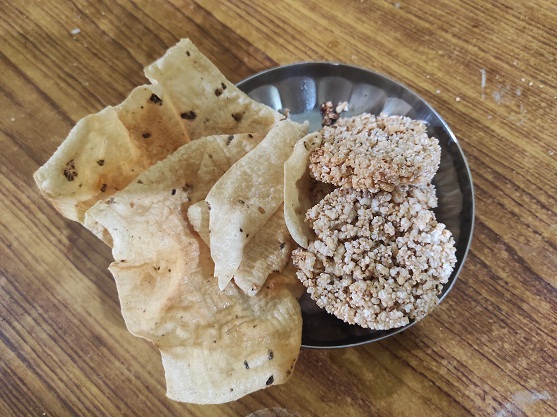
Chipuda Pakhala (Squeezed Rice)
Chupuda Pakhala (squeezed pakhala) is made by squeezing cooked rice that has been washed in water and is served with curd, roasted cumin, and salt. This variant is also not very popular and is mainly consumed by urban population.
Chain Pakhala(Hot Pakhala)
Chain pakhala, also known as Garama pakhala (hot pakhala), is similar to saja pakhala (fresh pakhala), but it is served with hot rice. This variant is the only one which can be enjoyed even in winter while others are typical summer recipes.
Chhunka dia Pakhaa
This is when Saja or Basi Pakhala is tempered with “chhunka” or tadka. For preparing the Chhunka you have to heat a pinch of oil on a pan. Then add mustard seeds, curry leaves and dry red chili and saute it. Thereafter add this Chhunka into the Pakhala bowl. You may also add some curd, if you prefer. But don’t forget to add little salt before serving.
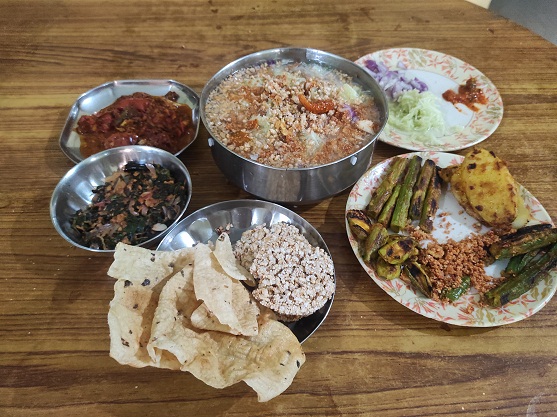
Must Read: Bodh Gaya travel: A self-enlighening journey into the land of Buddha
Other types of Pakhala Bhata
Paani Pakhala is a common variant prepared by only adding salt and water to the cooked rice.
Ada Pakhala is prepared by adding ginger and salt to the cooked rice soaked in water.
Tabhaa Pakhala is prepared by adding lemon water to the cooked rice.
Ghia Pakhala is prepared by adding ghee to the cooked rice.
Malliphula Pakhala is prepared by adding malli flowers(jasmine) to the cooked rice for aroma. Jira Pakhaḷa is prepared by adding fried cumin with curry leaves to the pakhaḷa.
Pakhala Divas
Every year on March 20 Odisha observes ‘Pakhala Divas’ marking the popularity of the State’s main staple food since ages even in the age of pizzas, burgers and other fast-food items. The day is remembered as Pakhala Divas ( Pakhala Day) to promote the cuisine in the modern era. The initiative was started in 2015 by Odias to celebrate their traditional food across the globe.. Pakhala (water rice)) is the Odia term for an Indian dish consisting of cooked rice that is lightly fermented in water.
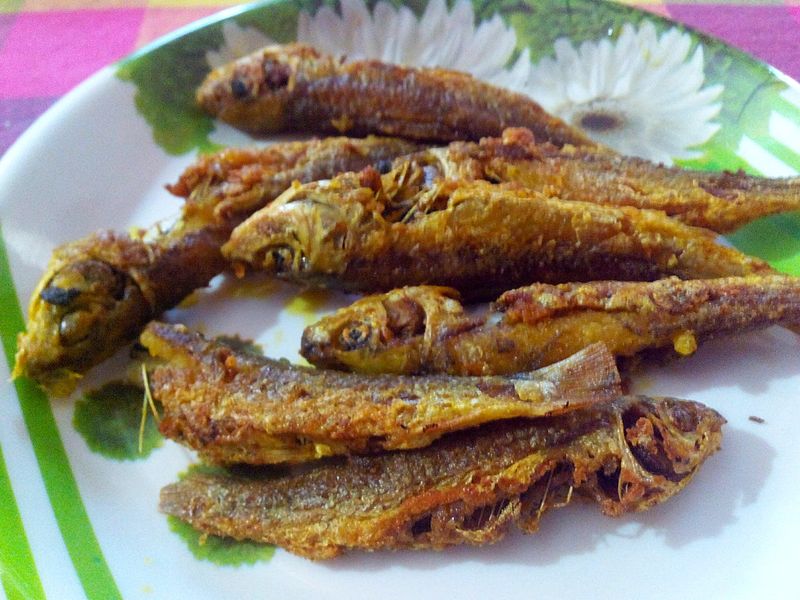
Recommended Read: Balangir: Of temples, hills and forest
Pakhala Bhata in popular media
In July last year Pakhala Bhata was trending on various social media platforms. It all started when one of the MasterChef Australia finalists, Kishwar Chowdhury, served ‘Smoked Rice Water’ with ‘aloo bharta’ and fried sardines marinated in white soya. What piqued interest for many was that this rice gruel, labelled as a poor man’s food, could be passed off as a major course in the finale. The judges heaped praise on Kishwar for reviving forgotten, fermented delicacies to fine dining.
Pakhala Bhata also made Isak Munda, a tribal from Sambalpur in Odisha once a daily wage labourer and now a famous youtuber a star who featured in the Prime Minister Narendra Modi’s Mann Ki Baat address last year. It was Munda’s eating of Basi Pakhala (stale rice) with only onion and green chilly that went viral and made Munda a youtube sensation.
The Times of India (Bhubaneswar) last year reported that a study by AIIMS, Bhubaneswar had found that ‘Pakhala Bhata’ or the fermented water rice and the water ‘torani’, the traditional food of Odisha was immunity booster.
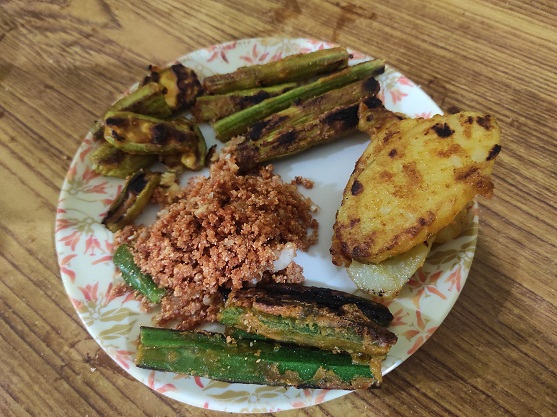
In case you missed it: A complete guide to a weekend road-trip to Srisailam
Pakhala Bhata FAQs
It is popular among the public as it provides a refreshing food source during the hot climate and replenishes the nutrients in the body. A traditional Odia dish, it is prepared with rice, curd, cucumber, cumin seeds, fried onions and mint leaves.
Pakhala is derived from the Sanskrit term ‘Prakhyala,’ which means ‘to wash with water.’ Traditionally, leftover rice was kept in an earthen pot with some water and a small amount of curd/lemon.
Pakhala is usually paired with items like burnt potato, tomato, or brinjal, fried fish or leaves, and an authentic Odia dish called Badi Chura.
Pakhla bhata, also referred to as water rice, is high in nutrients such as calcium, iron, and potassium. It is a good source of iron for persons who are anaemic. Water rice has many other health benefits.

